In almost every house where flowers are loved, orchids are found. These are very fastidious plants that need clear conditions of detention. Read more about what should be the orchid temperature, will be discussed in this article.
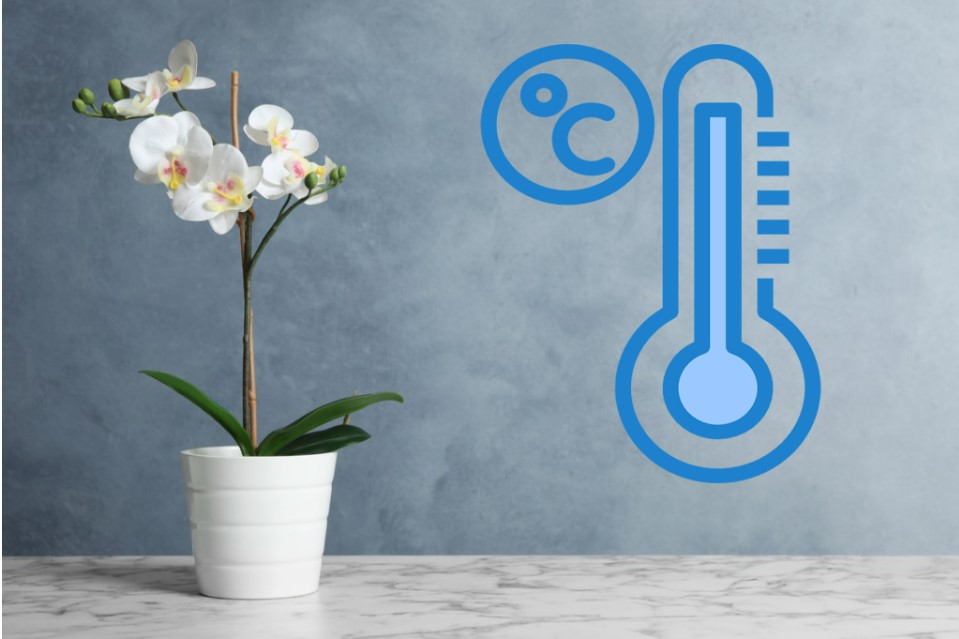
Orchid temperature
Frequently asked question, at what temperature should I grow my orchid? Orchids, regarding the temperature regime, are divided into several groups. More details about the temperature of orchids for each of them will be discussed later.
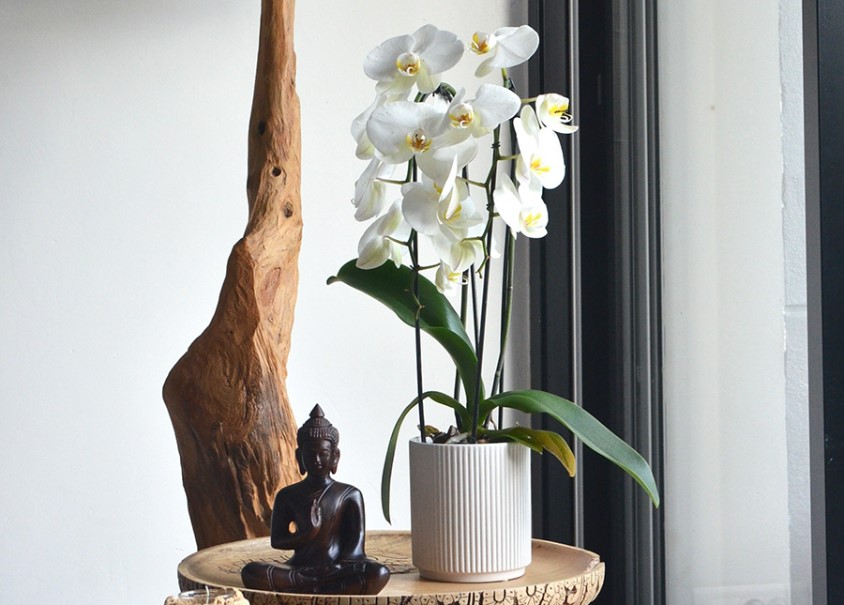
Thermophilic
A common question is, can orchids tolerate heat? Actually, yes. As you know, in a tropical climate, temperatures are quite high, ranging from +86 °F to +104 °F. Daily fluctuations can vary up to 50 °F, and a high humidity index is observed. Heat-loving plants need a minimum temperature of +59 °F. The category of heat-loving orchids includes:
- Wanda;
- Phalaenopsis;
- Ludisia.
They prefer keeping at temperatures from +71 °F to +78 °F. A short-term increase in indicators up to 104 °F is allowed. The longer the temperature rises, the higher the likelihood of stress in the bushes. Therefore, the evaporation of moisture will increase to cool the leaves.
Increased humidity is required to reduce stress. It is important to ensure a constant circulation of fresh air.
What should be the difference between night and day temperatures? In the tropics, the difference between day and night temperatures is very small. The atmosphere during a short night does not have time to cool down much and is heated by the earth heated by the sun. Accordingly, the difference should be approximately 41-50 °F, optimally maintaining an average value of 44 °F.
Tropical plants do not hibernate in the usual sense of the word for us.
In nature, they grow and lead an active lifestyle throughout the year. The relative dormant period can be distinguished by the time when the tropical orchid does not bloom, but at the same time, it actively enters into the vegetation process and gains green mass.
Accordingly, the mode does not change. It is necessary to take into account the duration of lighting because in the tropics the sun is active throughout the year – approximately 12-14 hours a day. If for some reason it is impossible to provide such a duration of illumination in winter, the temperature should be reduced to reduce the intensity of photosynthesis – up to +68 °F.
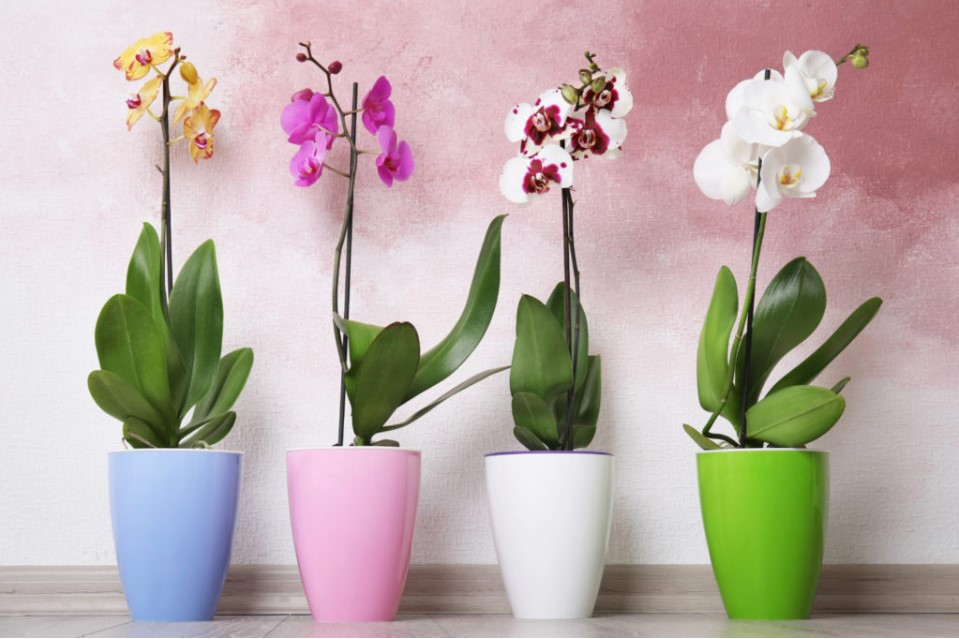
Moderate temperature content
This type of plant can grow both in warmth and in harsh temperature conditions. They can withstand a constant temperature of +59 °F. Plants that live on the lower tier of the mountains of the tropics and prefer a moderately warm content:
- Dendrobium;
- Odontoglossum;
- Miltonia;
- Cattleya and others.
At what temperature is it recommended keeping at home? As usual, many orchids are perfectly suited for the summer temperature of the middle climatic zone of +64-71 °F.
Important! These tropical orchids can be started on an open balcony or right outside in the garden when nighttime temperatures do not drop below +59 °F.
What should be the difference between night and day temperatures? A difference of 41-50 °F will be sufficient. In general, the range of differences for most orchids is approximately the same.
And given the trend of hybridization, which is aimed at averaging the preferences of many orchids to the general living conditions in a residential area, we can recommend daily differences of 45 °F in winter and summer.
It is advisable to keep these plants at slightly lower temperatures than the temperature of +71 °F in residential premises in winter at the time of heating. Most orchids will be better wintered together with cold-loving counterparts at temperature ranges from +59 °F to +64 °F.
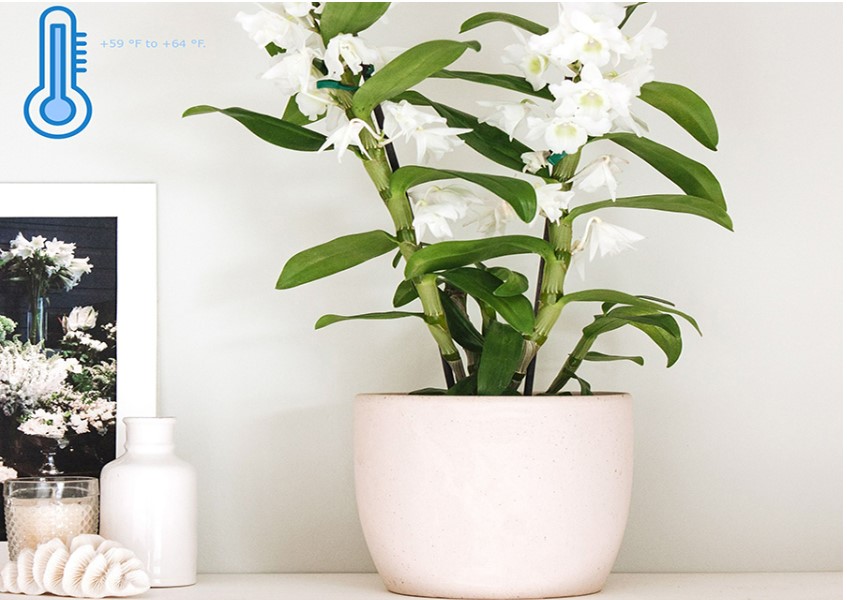
Cold resistant
This type of orchid is quite common in subtropical climates. They need to see the change of seasons. Wintering should be carried out in cool conditions, with low levels of humidity. This category of plants includes intermediate orchids that grow in nature in high-altitude tropical cloud forests at altitudes of 600-3500 m or in the subtropical zone. Namely:
- Cymbidium;
- Tselogina;
- Odontoglossum;
- Cattleya;
- Slippers.
At what temperature is it recommended keeping it at home? In summer, the optimal content is at a temperature of +71 °F to +77 °F during the day and from +51°ºF to +57 °F at night.
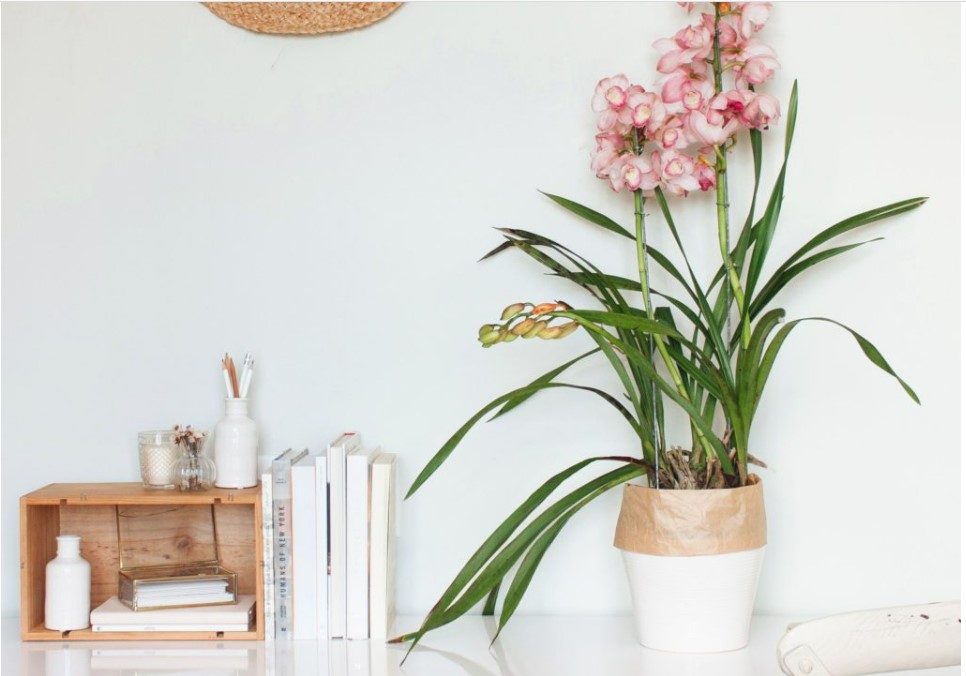
What should be the difference between daytime temperatures and nighttime temperatures?
In nature, under the conditions described above, daily and seasonal fluctuations characteristic of the area are observed. The daily allowance is approximately 41 °F to 50 °F, but may be higher, depending on the specific location.
This is important to consider when growing especially rare plant species that can be found in just a few places on Earth.
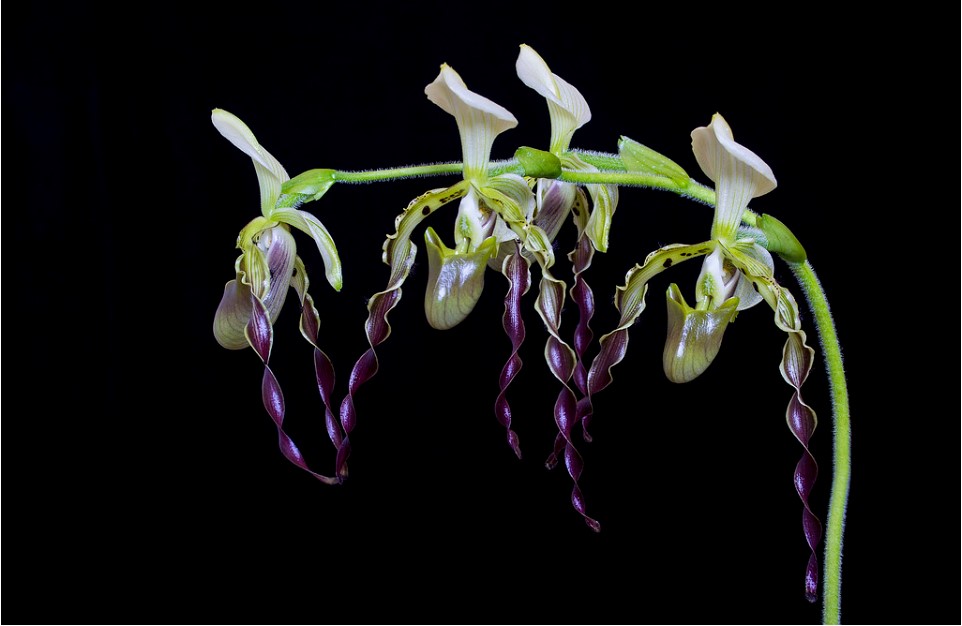
Temperature conditions in winter for cold-loving orchids in the apartment
It should be the temperature ranges for orchid growers from +68 °F to +70 °F during the day and from +48 °F to +50 °F at night. For obvious reasons, keeping cool growing orchids in the winter in an apartment is somewhat difficult. It is recommended to keep them in a loggia or on an insulated balcony.
Important! The wintering of such orchids in nature is accompanied by low air temperatures, dry content, and intense illumination (12-14 hours a day). This is explained by the absence of evaporation, and, accordingly, clouds, which give plants moisture and cover from the sun.
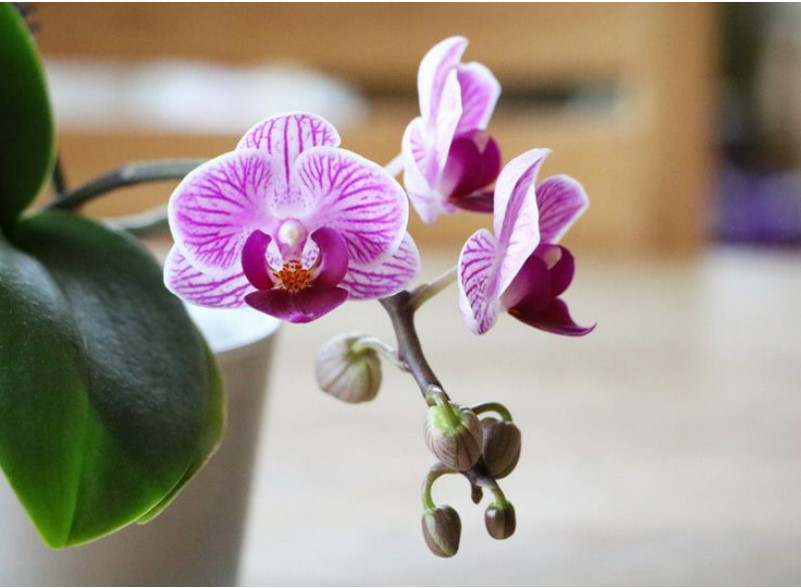
Temperature conditions for warm growing orchids
The choice of temperature conditions depends on the particular plant. More on this will be discussed later.
Minimum
It depends on which particular plant we are talking about. If we take the heat-loving Phalaenopsis, then +59 °F is critical for it, which, in principle, is the norm for the same Rossioglossum that hibernates in this state.
Orchids of the middle lane completely winter under the snow, withstanding negative temperatures and severe frosts. It is better not to check home orchids for wear and not lower the temperature below +54 °F, even for cold-loving species.
An inept decrease in temperature in the moist state of the plant and the soil in which it is located can cause:
- Stress;
- Reset colors;
- General loss of decorativeness;
- Frostbite;
- Disease;
- Plant death.
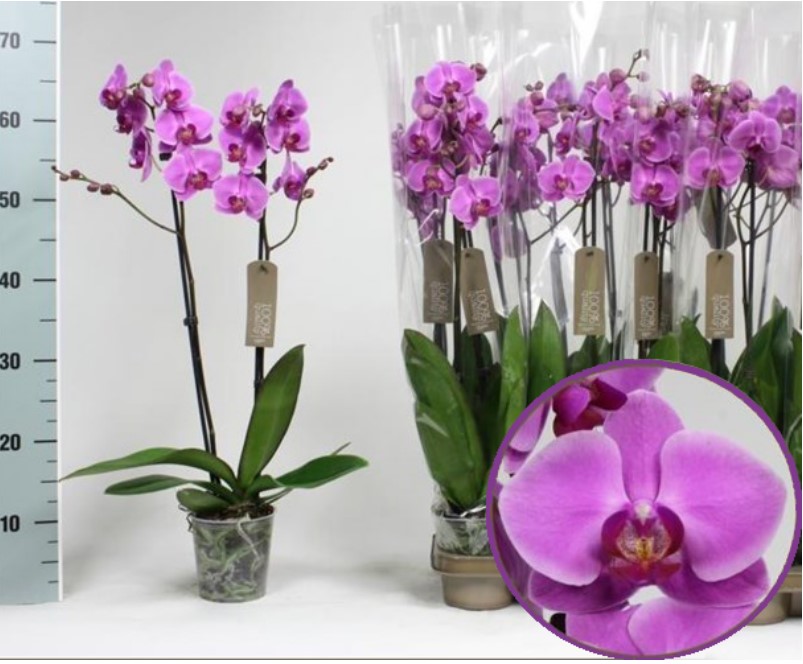
Maximum
Maximum and minimum are relative terms. The maximum for heat-loving orchids, which are not accompanied by a shocking state, is +82 °F. For a short time, +86 °F is also possible. In nature, high temperatures are offset by other natural phenomena, such as wind or rain, which cool the plant itself.
Effect on plant growth
It is known that the maximum intensity of the process of photosynthesis is observed at a temperature of +77 °F. Deviations from this value reduce the intensity, respectively, inhibit the activity, growth, and development of the entire plant.
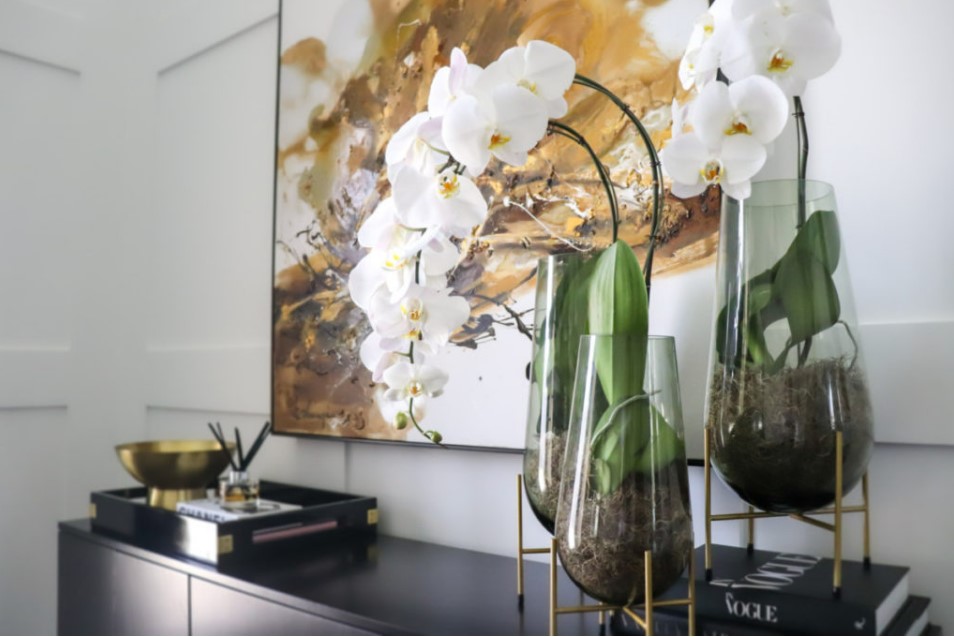
How to understand that your beauty is uncomfortable, precisely from the high temperature?
The growing orchids show this with all their appearance:
- Elongated shoots;
- Withering;
- Loss of leaf turgor and false bulbs;
- Resetting flowers or their rapid withering;
- Sunburn is also possible on the leaves;
- Wilting and falling of the lower tier of leaves.
High temperatures by themselves do not cause disease. They can only cause a loss of decorativeness in the plant.

What causes too low temperatures at night?
Hypothermia, at a minimum, can reduce the activity of the entire plant, as well as cause it to hibernate. At a maximum, it can cause frostbite;
Resuscitation after frostbite
Hypothermia looks like wet, watery, slimy spots on the plant. For a heat-loving orchid, 30 minutes is enough at a temp. of +50 °F to +59 °F to get tissue frostbite. Cold-loving ones withstand more, and damage is observed at a night temperature of 32 °F (±2 °F).
Resuscitation for such plants is not carried out, only symptomatic treatment is required. If 1-2 leaves of an orchid are frozen, then they are cut to a living, healthy tissue, and the cut points are treated with charcoal or cinnamon.
In case of damage to the stem area, the leaf is removed completely, carefully removing it from the plant, so as not to damage the stem and roots.
Total, severe frostbite, which affected the entire orchid, is not treated, the plant is disposed of. You can not keep orchids in a cold draft by an open window during winter airing.
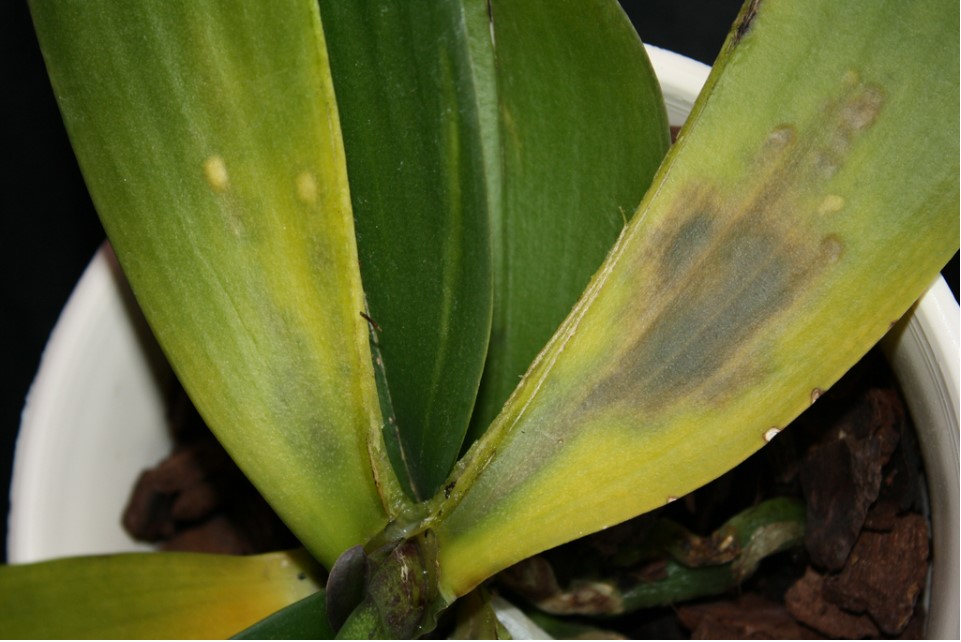
How do organize temperature ranges?
Quite often, you can hear about how important daily and the seasonal temp is. Changes are for orchids to bloom. However, few people tell how to achieve this in an apartment, especially in winter with the central heating turned on.
In urban apartments, the amount of difference necessary for laying flower buds is easily achieved naturally, and at the same time, it is at the right time. This refers to the period in the fall – when it is already cool, but the heating is not working yet, and in the spring – when the heating is turned off, but not yet warmer.
It is also easy to regulate the temp. during the heating period with the help of valves and thermostats, including automatic ones, which are installed directly on the heating radiators. The night temperature should be 41-50 °F lower than during the day.
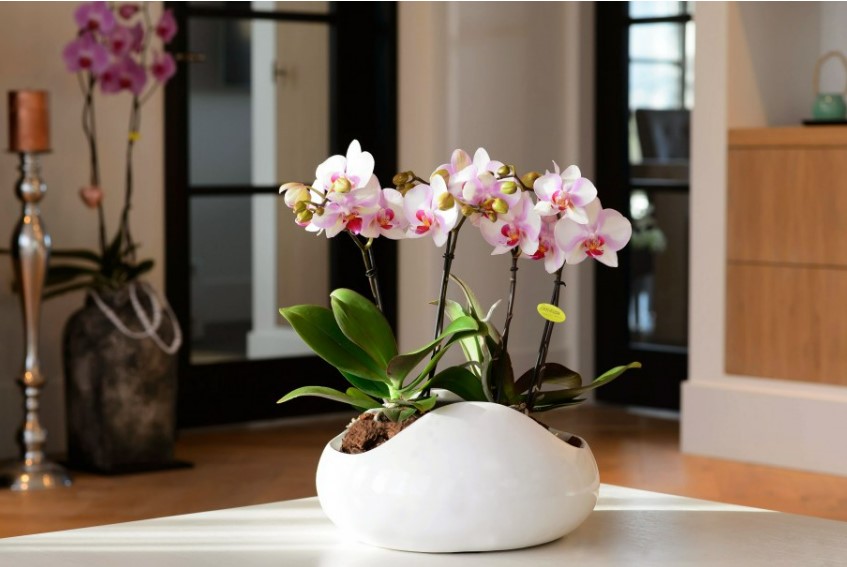
What should be the air temperature during flowering?
The temperature should be within the normal range that exists for a particular species. It must be understood that lowering the temp. by 35-37 °F, somewhat reduces the intensity of flowering. That is, the orchid opens buds more slowly and blooms longer.
Heat, respectively, reduces the overall duration of flowering.
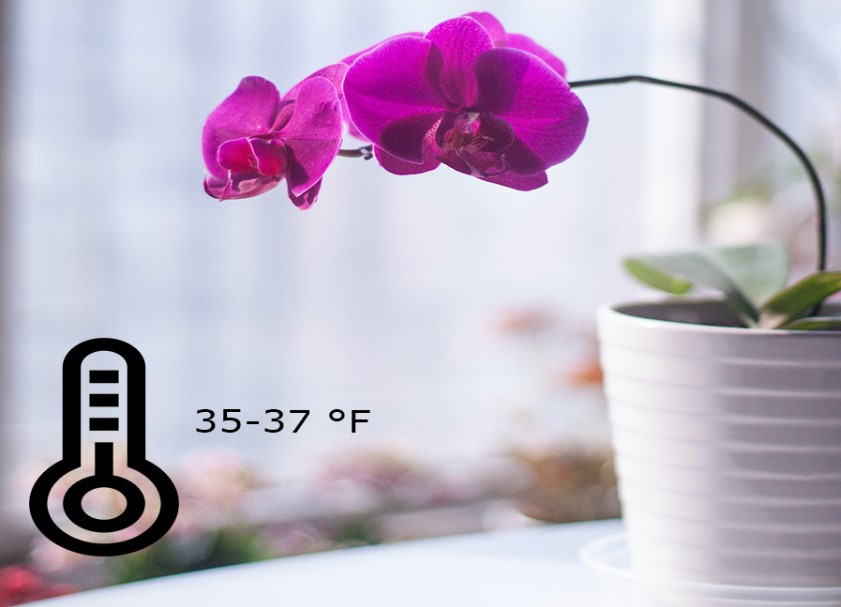
Conclusion
The choice of temperature for growing orchids is a rather responsible task. It is important to consider the variety grown, as well as the conditions of the region. Some species may die off in winter.
What temperatures can orchids tolerate?
Orchids prefer temperatures between 60°F and 85°F (15°C to 30°C). Avoid temperatures that are too high or too low to prevent stress.
What happens if an orchid gets too cold?
If an orchid gets too cold, it can become stressed, causing its leaves to yellow, its growth to slow, and its roots to rot. In extreme cases, the plant may die if it is exposed to temperatures below its tolerance level for an extended period of time.
Do orchids like warm or cold water?
Orchids prefer tepid or warm water, not cold water. Cold water can shock the roots, causing them to become stressed and potentially causing root rot. Watering with tepid or warm water helps to prevent stress and promote healthy growth. It is best to avoid using water that is too hot, as this can also cause stress and harm the plant.
